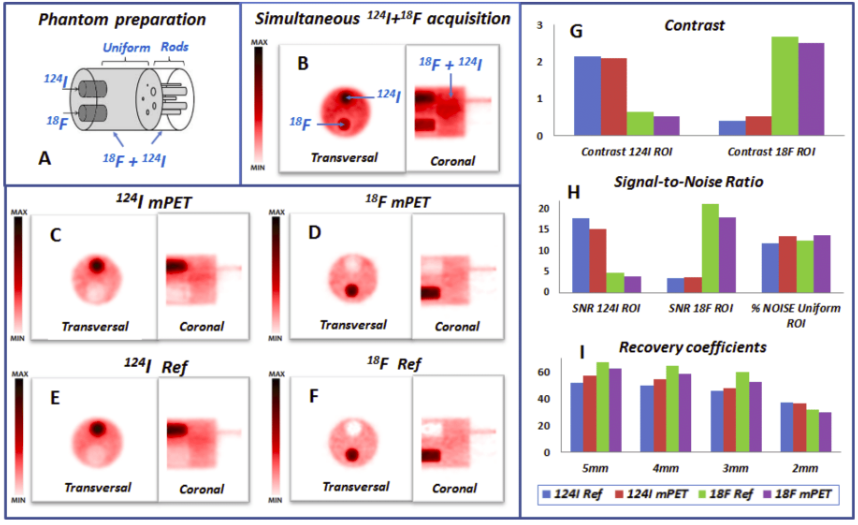Image Quality Assessment of Multiplexed PET

| AUTHORS | |
| JOURNAL | IEEE Nuclear Science Symposium & Medical Imaging Conference, 2015 |
| ABSTRACT | Positron emission tomography (PET) is one of the most sensitive noninvasive molecular imaging tool, being its sensitivity several orders of magnitude higher than that typically obtained in single photon emission computed tomography (SPECT). However, PET lacks the ability of SPECT to multiplex signals from several tracers, which is very useful in many different studies such as cardiac imaging with 99mTcSestamibi and 201Tl. Recently, it has been shown that the use of tracers labelled with positrongamma emitter radionuclides like (124I, 86Y, 82Rb, 94mTc, 76Br) in combination with tracers labelled with standard positronemitter radionuclides like (18F, 11C, 13N) enables multiplexed PET (mPET). mPET uses the triple coincidences from the positrongamma emitters, together with the standard double coincidences to reconstruct separated images of each radionuclide’s activity distribution. We obtained encouraging results with mPET in some initial preclinical studies, but a detailed study of the quality and quantification properties of mPET images, and an evaluation of its performance in realistic clinical scenarios was still required. The acquisition software of the Argus preclinical PET/CT scanner was adapted to provide datasets of double and triple coincidences, and then used to acquire image quality phantoms filled with different activity concentrations of 18F and 124I. The quality of the separated images of both radionuclides obtained with mPET was assessed in terms of bias, contrast, resolution and noise. Our results show that with the appropriate corrections for triple randoms and interdetector scatter, mPET provides images with little bias (<10%), good contrast (95% of that obtained with single tracer acquisitions) and a small relative noise increase (<10%). The simulations of acquisitions in clinical scanners with realistic concentrations of 18F and 124I showed that mPET can be also used in clinical cases for simultaneous PET imaging of several radiotracers. |
| LINK | Link |



